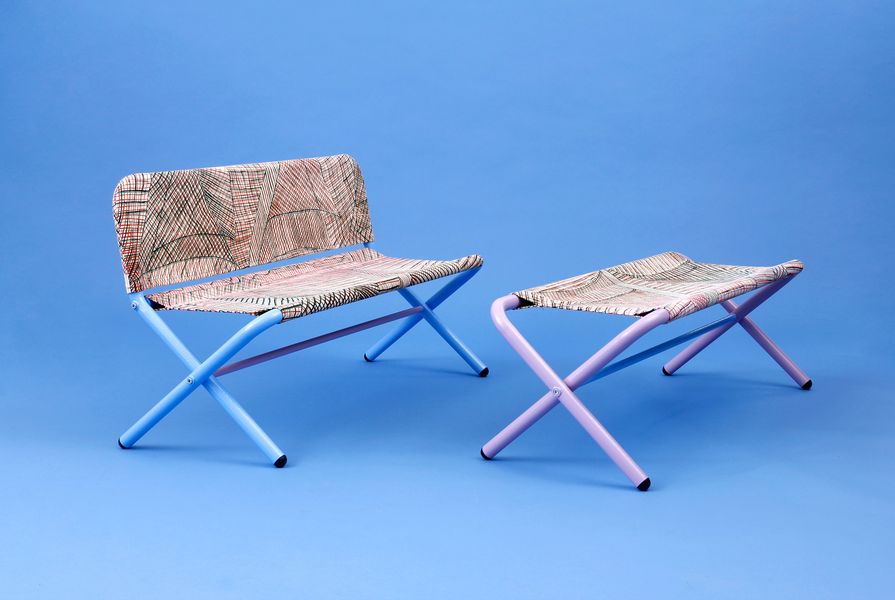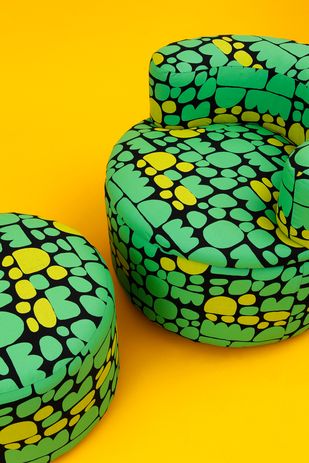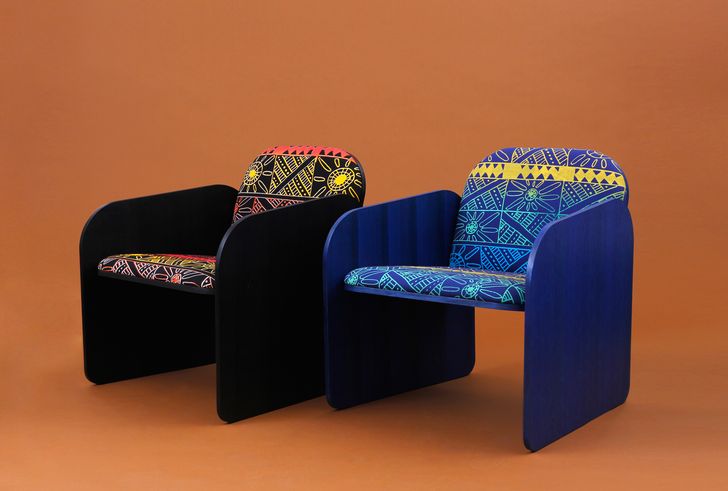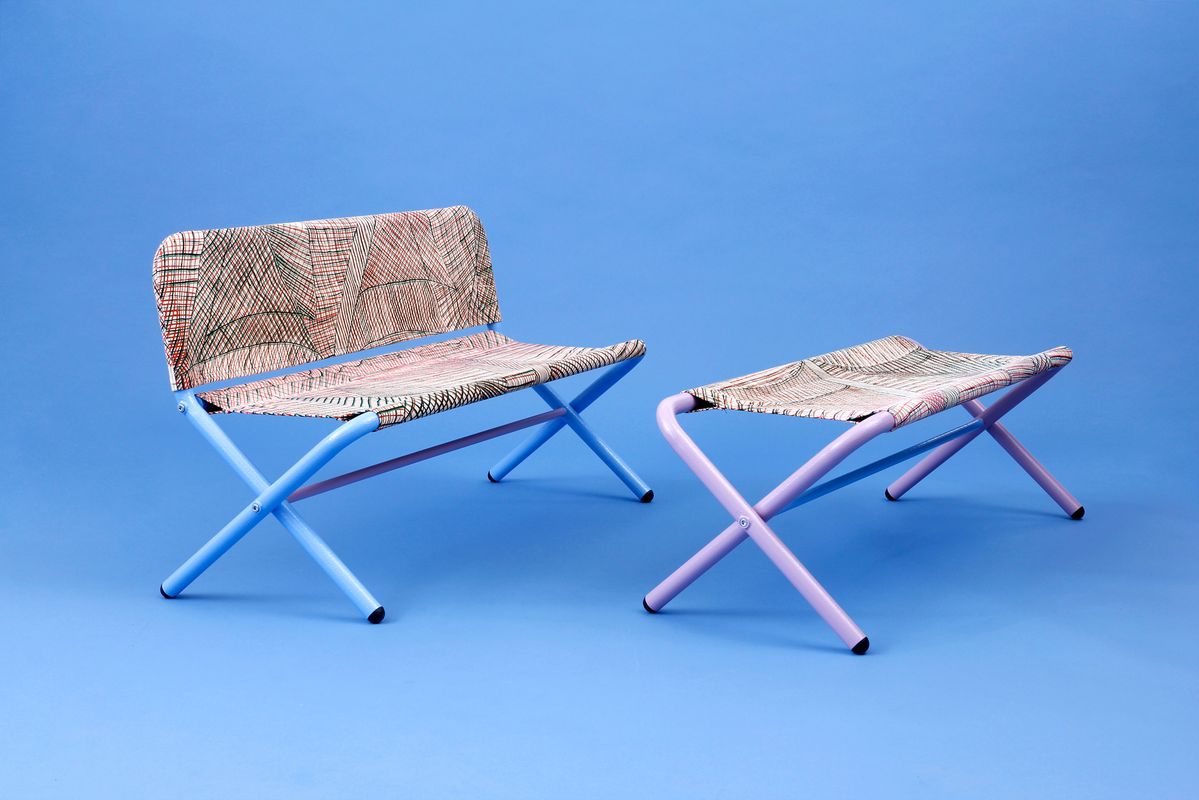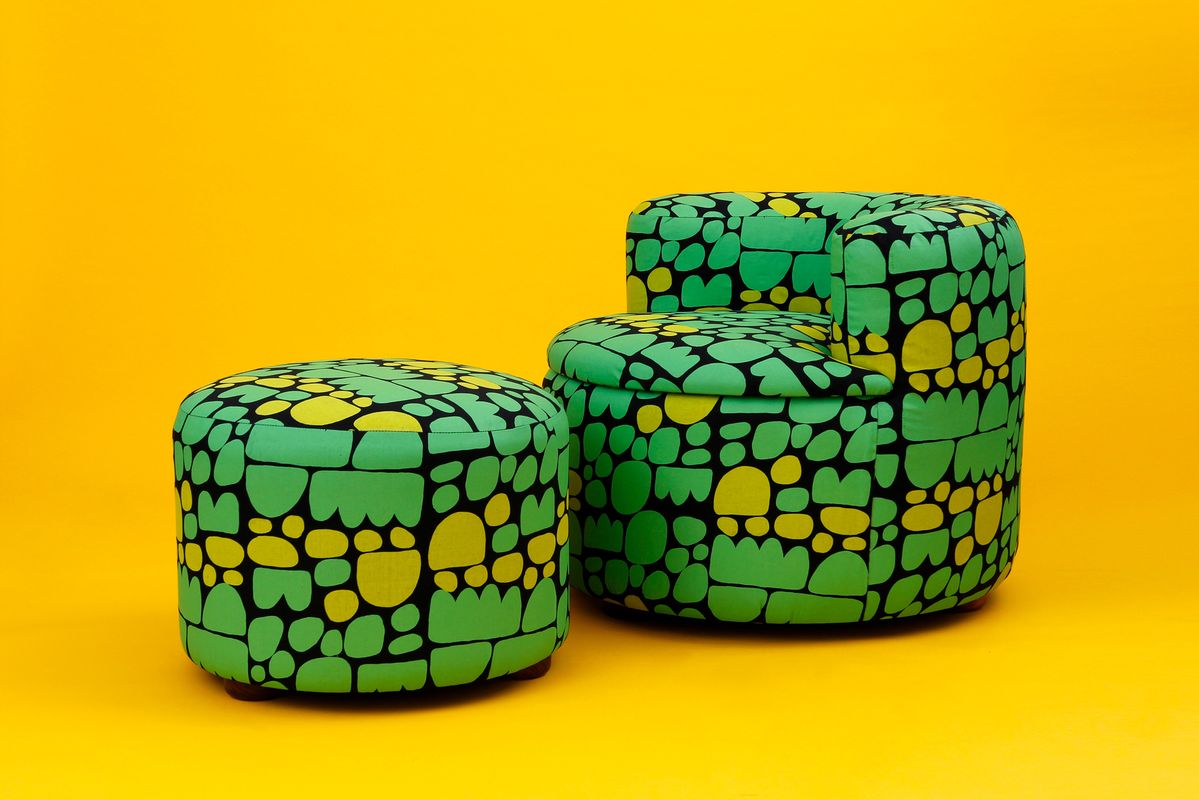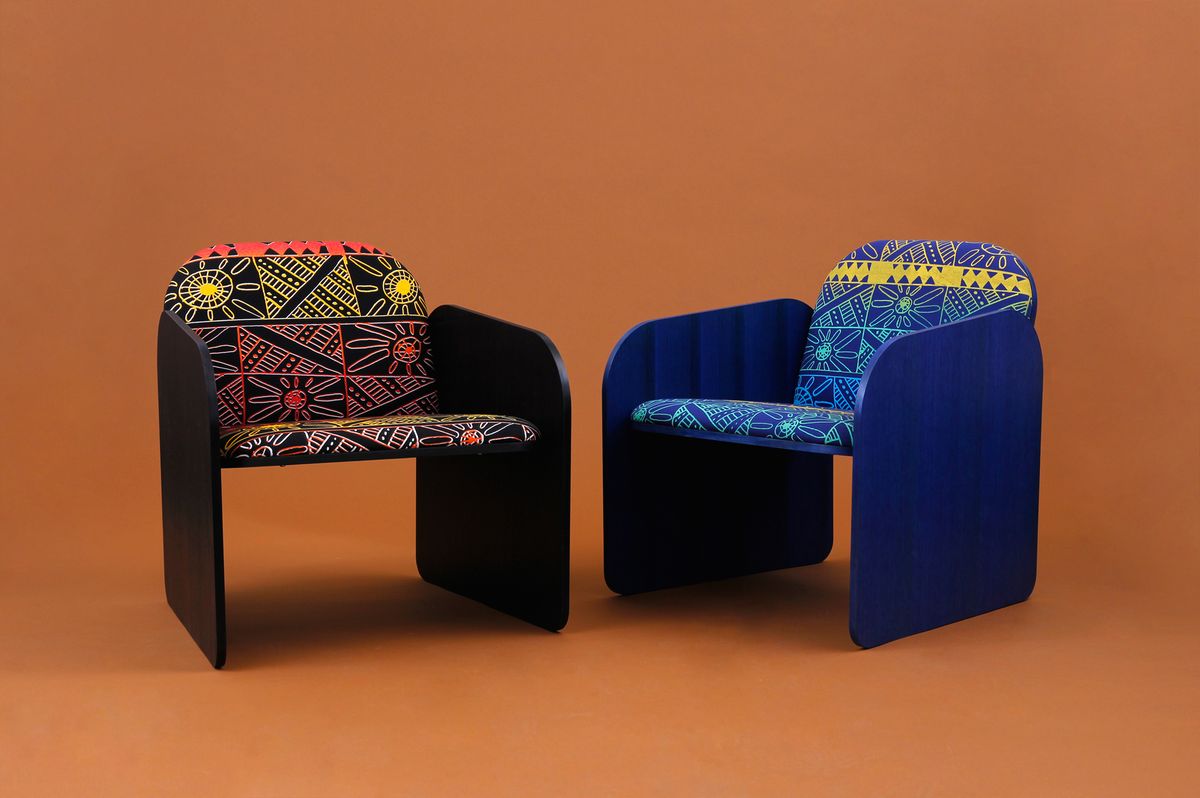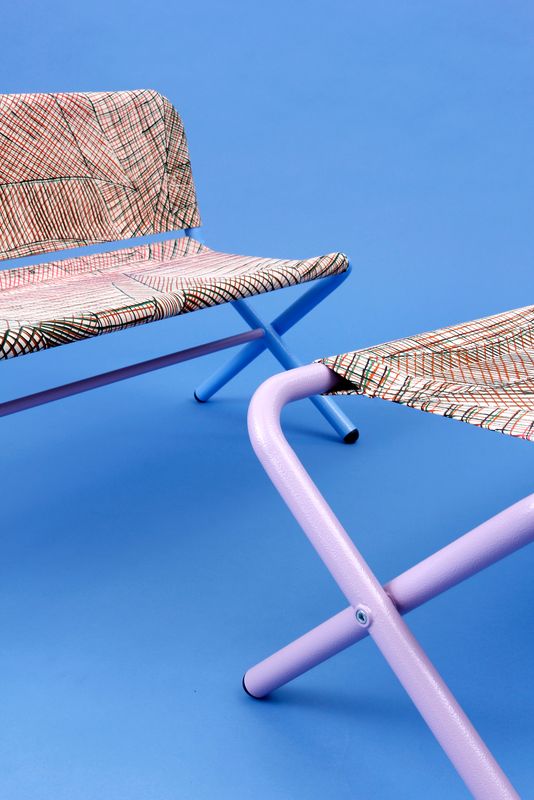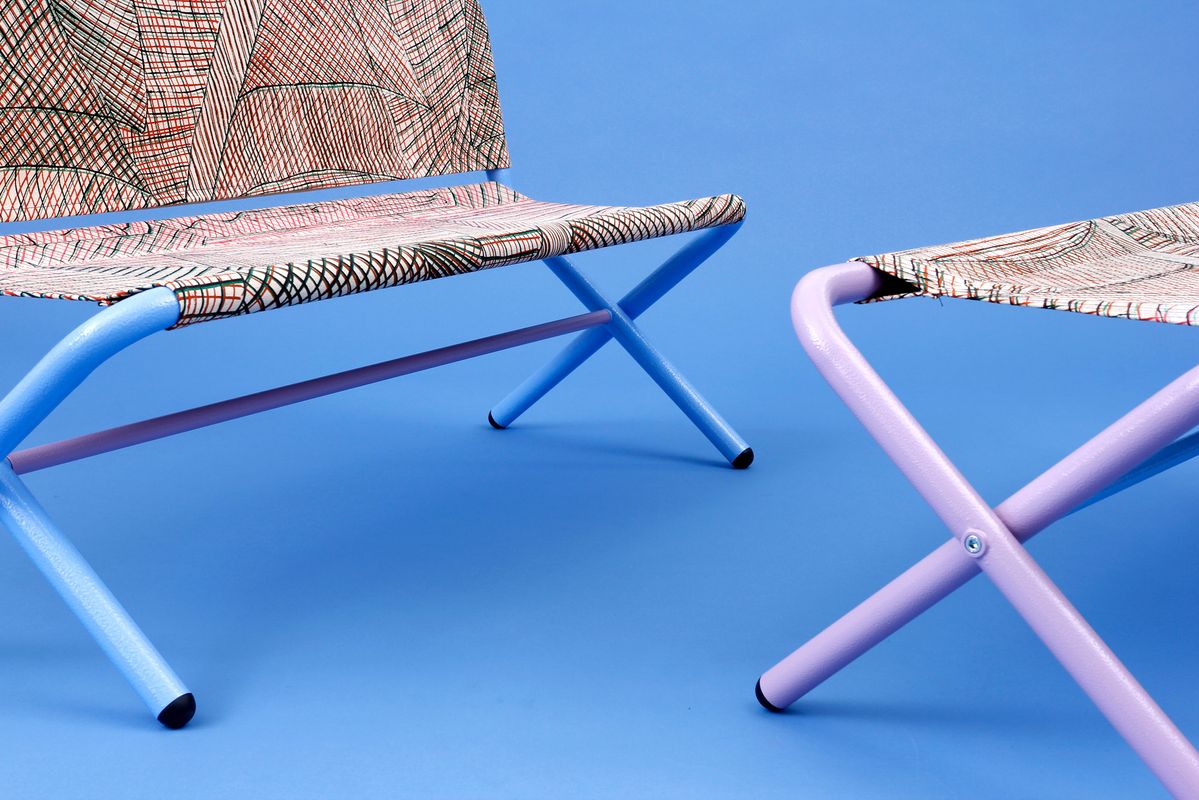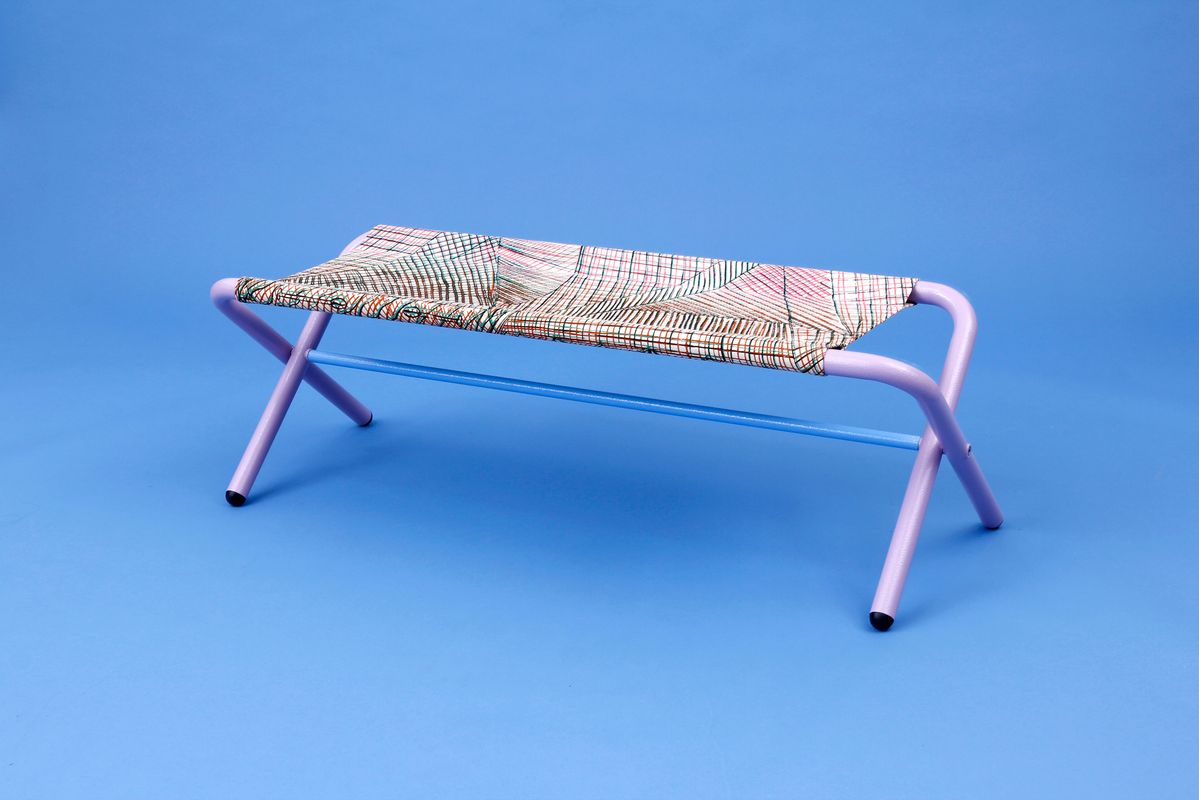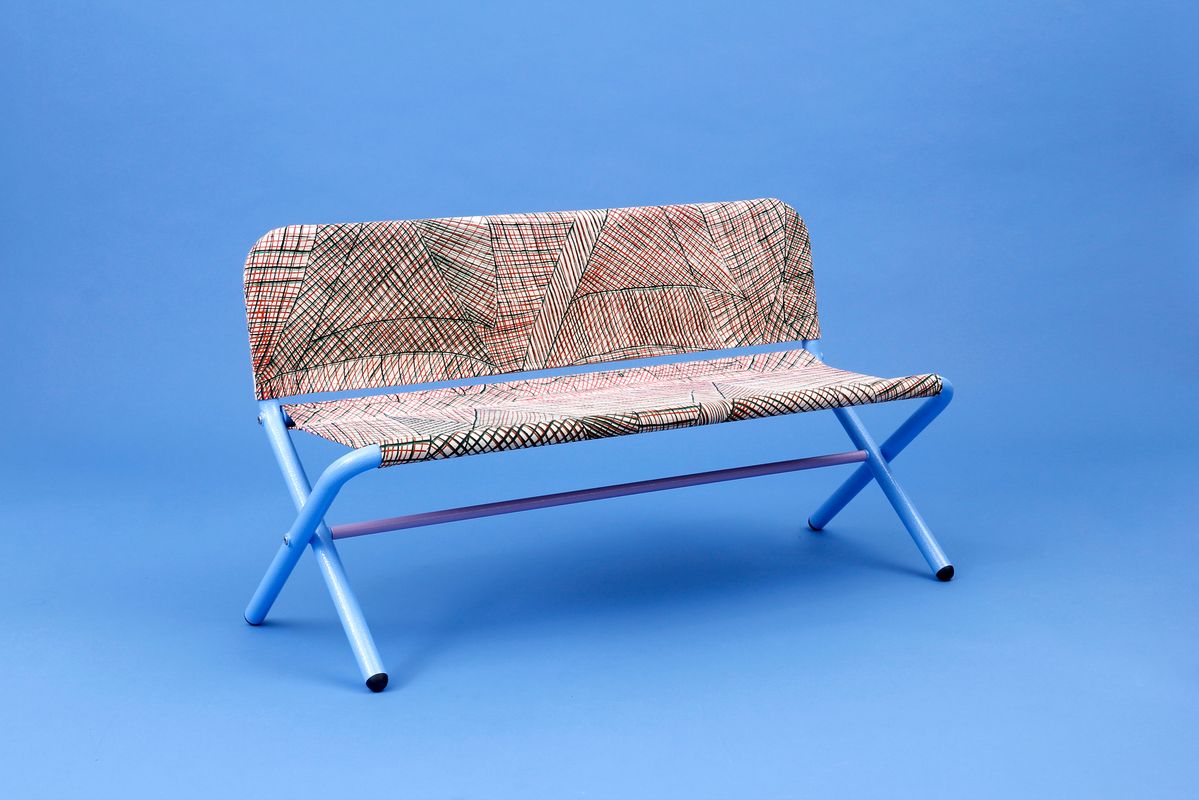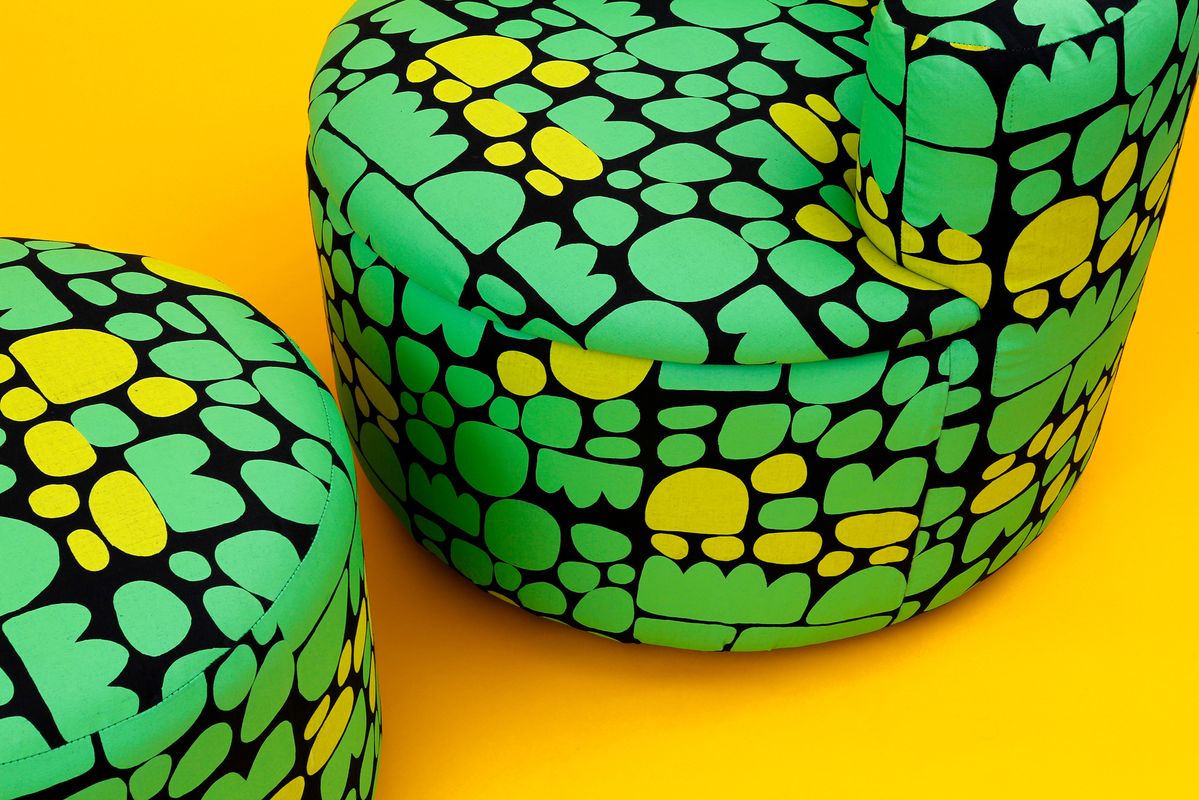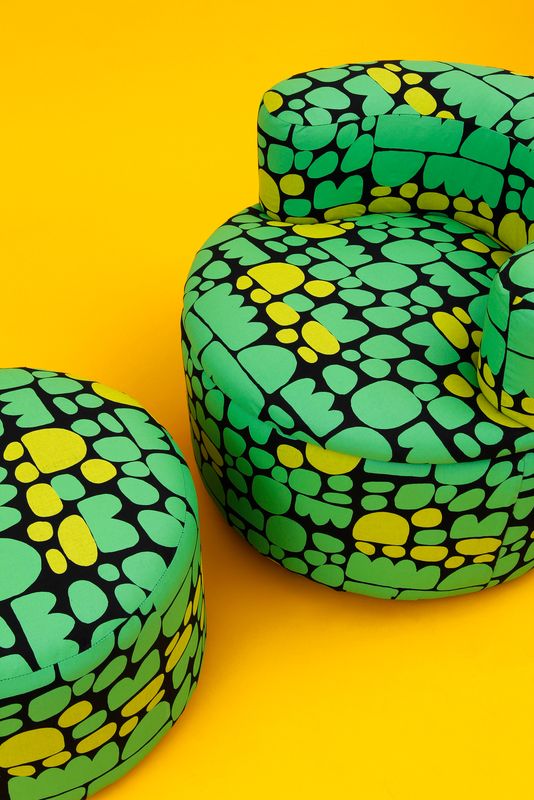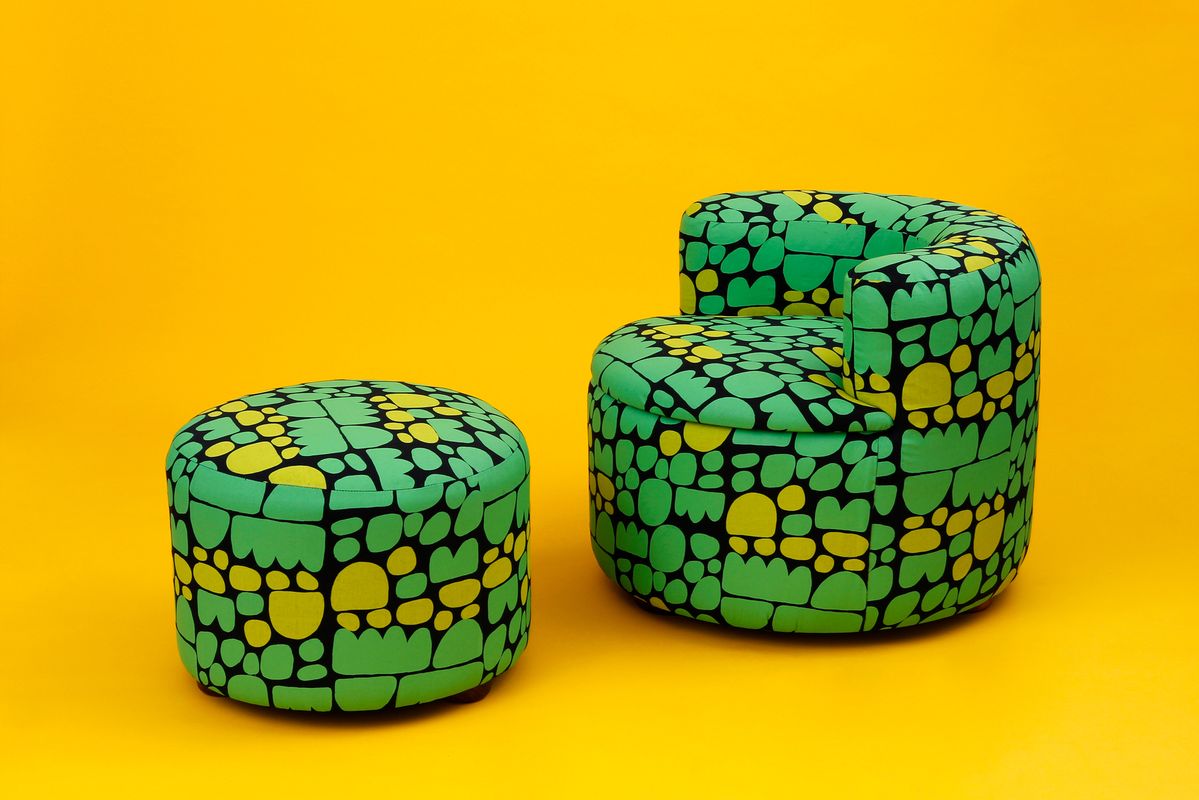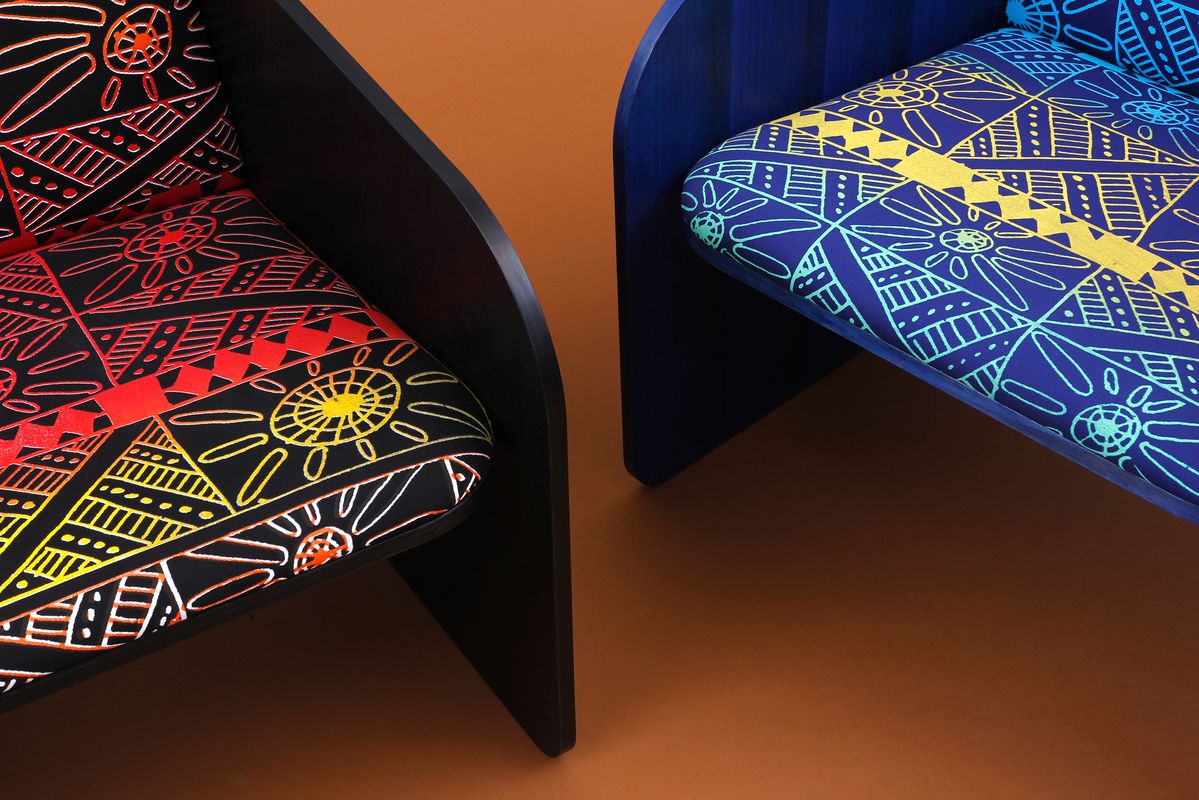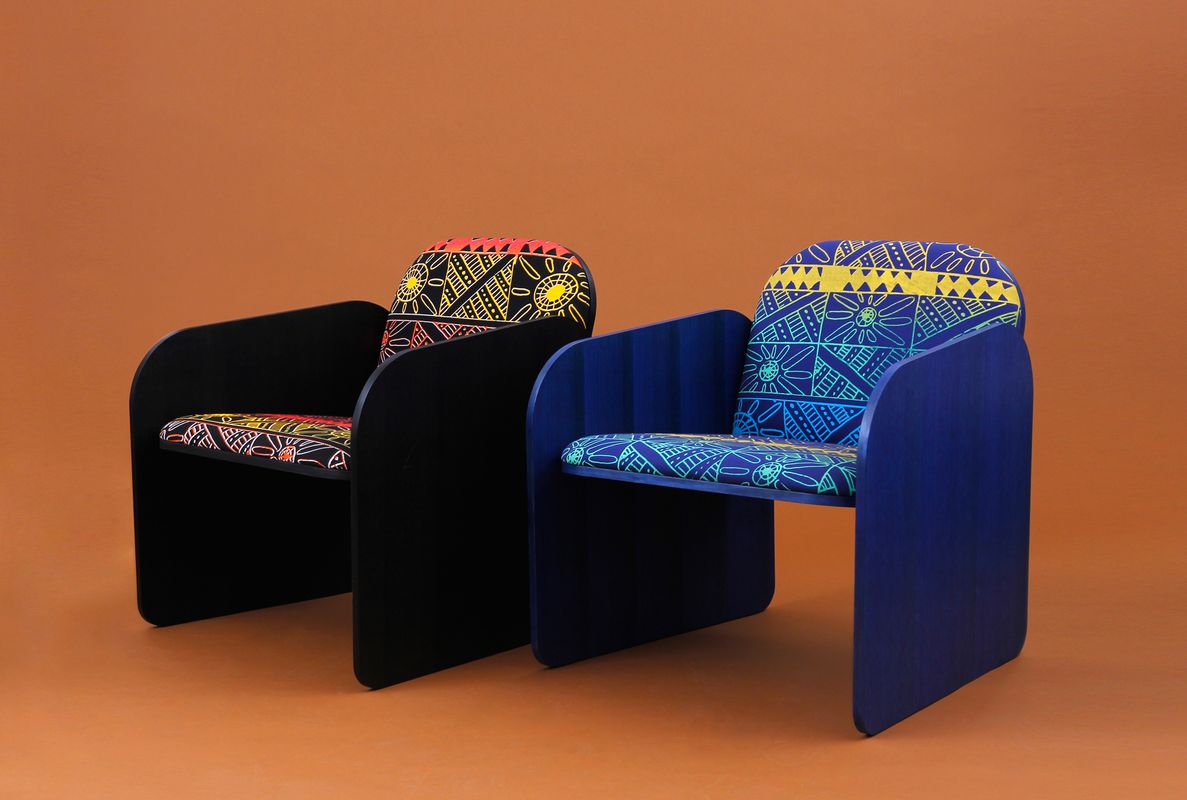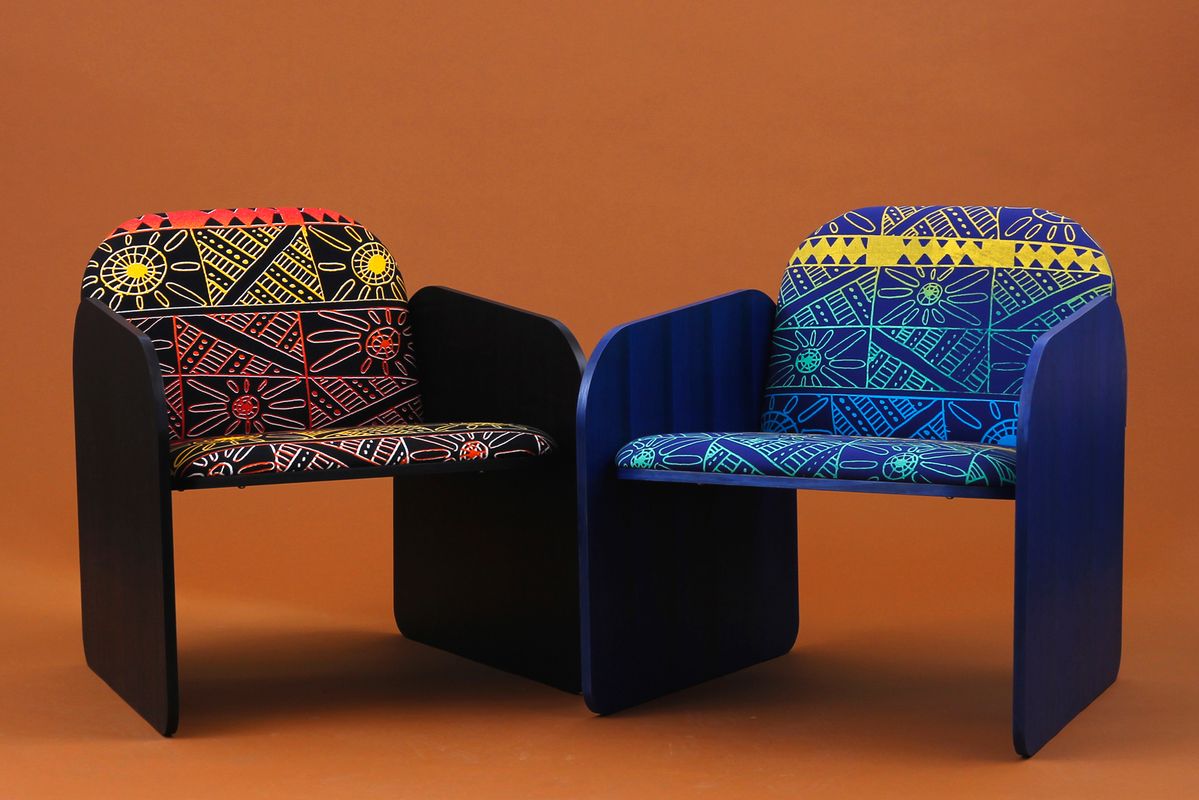Three Indigenous textile artists from the Northern Territory have teamed up with South Australian furniture and product designers to produce a series of chairs that offer a new way of engaging with Indigenous material culture and storytelling.
Showing at the Jam Factory in Adelaide from 9 October to 28 November, the Rekkan / Tamuwu / Nyinakati: Sit/Sit Down exhibition features contemporary furniture upholstered in textiles designed by the artists. But this isn’t about simply draping textiles onto existing furniture forms; instead, an iterative design process saw the symbolic textile designs shape and inform the structure of the chairs, complementing and continuing the artists’ traditional stories.
Raylene Bonson X Daniel Emma.
Image: Raylene Bonson X Daniel Emma.
One of the pairings is Ndjébbana–Kuninjku textile artist Raylene Bonson from the Bábbarra Women’s Centre in Maningrida with Daniel To and Emma Aiston of the design studio Daniel Emma. Bonson specializes in the linocut printing technique and is known for her designs depicting ancestral stories and ceremonial objects, particularly the lorrkkon (hollow log for burial ceremony), the kunmadj (dillybag) and the mandjabu (conical fishtrap). She was mentored by her late mother, Nancy Gununwanga, a senior textile artist at Bábbarra Designs and a founding member of the Bábbarra Women’s Centre. Bonson’s silkscreened wubbunj (paperbark canoe/makassan boat) fabric design was inspired by the story of her partner’s father, who travelled with other men from Nakalarramba across the river to Djomi and, upon finding fresh water, settled on the land that became Maningrida. Inspired by and keen to reflect life in and around Maningrida, Emma Aiston and Daniel To have designed foldable utilitarian loveseats that celebrate “the transportable nature of wubbunj and the thought that this is something that can be moved around and used with relative ease.”
Keturah Nangala Zimran X Caren Elliss.
Image: Keturah Nangala Zimran X Caren Elliss.
Another creative pair is Luritja–Pintupi artist Keturah Nangala Zimran from Ikuntji Artists in Haasts Bluff and designer Caren Elliss. Nangala Zimran creates bold, strong and bright textile designs and the fabric she has selected for this project features contrasting colours that depict sand hills and puli puli (rocks) in the landscape. In designing the form of the armchair, Elliss was attracted to the bold, strong and bright graphical nature of the textile design. Resonating with the intergenerational stories of Keturah, her mother and grandmother, Elliss responded the fabric by focusing on curves, particularly those found in the movement of the wind in the sand hills and the shape of the rocks in the landscape. The circular form of the armchair and footrest enclose the sitter in a way that suggests being enveloped by Country/. “I wanted the furniture to act as a visual anchor, a boulder-like form on which to wrap Keturah’s work and story around, providing a 3D interpretation and a continuance of the visual cues and movement found in Keturah’s work,” Elliss says.
Roslyn Orsto X Dean Toepfer.
Image: Roslyn Orsto X Dean Toepfer.
Finally, Roslyn Orsto from Tiwi Designs in Wurrumiyanga teamed up with furniture and lighting designer Dean Toepfer. Orsto is known for her ochre paintings on canvas and paper which she creates using the wooden comb technique. Her punarika (waterlily) textile design celebrates the presence of waterlilies in the lakes ponds, rivers and running streams of her homeland as well as the integral role that the plants play in her community as both bush medicines and sources of nourishment. Toepfer has created two armchairs with a minimalist aesthetic that depict Tiwi lore relating to the use and stories of punarika. “The first chair represents the calm and nurturing lakes and ponds where waterlilies provide bush medicines and food, while the second depicts the fire that the elders and traditional owners create to calm the Rainbow Serpent that rises if the waterlilies are taken without her permission”, he says. “Both chairs depict the balance and harmony that the Traditional Owners managed for millennia.”

